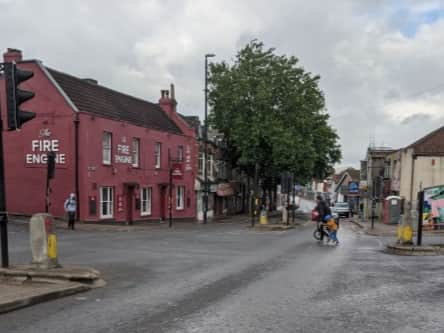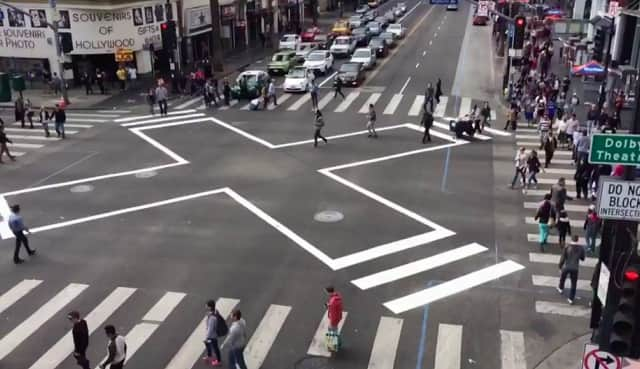X-style crossing put forward for ‘dangerous’ crossroads as campaigners demand action
and live on Freeview channel 276
Campaigners have ramped their calls for safety improvements at a ‘dangerous’ crossroads outside St George Park amidst fears a wanted redesign for the junction could be left off a neighbourhood project. The Church Road junction with Blackswarth Road and Chalks Road has been a major concern for locals for several years with 16 people injured over the past five years, according to St George Active Travel Group.
The junction received the highest number of comments in a consultation run earlier this year for the East Bristol Liveable Neighbourhoods project, which aims to give local people a say on how their area can be made safer for cyclists and pedestrians. But the St George Active Travel Group issued a statement over the weekend over ‘fears that redesigning the junction is “out of scope” for the project’
Advertisement
Hide AdAdvertisement
Hide AdGroup member Jim McEwen said the junction must be prioritised as part of the scheme due to the ‘huge local concern and obvious safety issues’. He says the current crossroads design, implemented in 2006, is out of date.
Currently, pedestrians using the junction are forced to use pelican crossings around the crossroads, and it can take around four minutes to walk from St George Park entrance to Blackswarth Road.
The group says that the ‘inefficiency’ in crossing the junction means adults and children run diagnonally across the crossroads to save time. A local resident called Jo also said there was a danger using the small pedestrian islands. She said: “As a pedestrian this crossing is unsafe. Lots of people choose to run because the lights change so quickly, which makes things dangerous for drivers because people end up darting between waiting cars.”


She says that a roundabout with four zebra crossings set back from the junction would better. There are also suggestions for an x-style multiway pedestrian crossing, as introduced in Oxford Street in London 10 years ago.
Advertisement
Hide AdAdvertisement
Hide AdMr McEwen said: “Given the huge local concern and obvious safety issues, I can’t see how this junction could not be prioritised for such a project [East Bristol Liveable Neighbourhoods]. There is a potential pot of £12m here, surely some of this money could be targeted to make this junction safer and less stressful for everyone.”
The project bosses are currently going through feedback from its ‘co-develop’ phase, when the public attended design workshops and suggested ways local streets could be improved. Solutions focus on main roads, local streets and community assets and consider safer crossings, protected cycle lanes and road closures to motorists.


At the consultation stage of the project, many comments were made about the Church Road crossroads. One person said: “This is a really bad, junction, which is very difficult to navigate with children, buggies wheelchairs. The staggered pedestrian junctions don’t really work for all the foot/bike, pram, wheelchair traffic.
Another said: “Perfect place for diagonal pedestrian crossing please. I can think of no better place for this in Bristol. So many stages to crossing this street. Phasing of lights should favour pedestrians and cyclists not cars.”
Advertisement
Hide AdAdvertisement
Hide AdFollowing the ‘co-develop’ phase the next stage will be for an outline business case for funding from the West of England Combined Authority for work to take place. More can be read about the project by clicking here.
Comment Guidelines
National World encourages reader discussion on our stories. User feedback, insights and back-and-forth exchanges add a rich layer of context to reporting. Please review our Community Guidelines before commenting.
